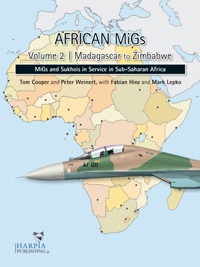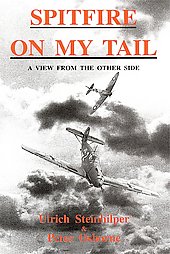Readers that are familiar with the military aviation history know the Fieseler Storch. A famous STOL aircraft built during the second world war by Gerhard Fieseler for the German Luftwaffe with its specific silhouette and characteristics. But the name of the book ‘does not cover the load’ as we Dutch used to say. The book contains a lot more historical information then just the story of Gerhard Fieseler’s life. Who was this man and why was he so well known in aviation history?
Fieseler was a highly decorated ace in WW I, an aerobatic world champignon and an aircraft builder who introduced many new technics in the world of aviation. The biography starts with his youth and school period and his training as a pilot after which he started flying in the German Luftwaffe soon becoming an experienced and successful fighter pilot. His adventures at the front were the fundament for his post war period flying aerobatics. One of his main competitors was the famous Ernst Udet who became a good friend but also his strongest opponent.
Gerhard travelled the world and was present in many aerobatic competitions and many airshows. He lifted aerobatics to a high professional level and invented many new technics. He demonstrated for the first time the outside loop and introduced negative g’s in the competition. On the top of his career in airshow displays he was considered as the world’s best display and aerobatic pilot. He was not only an excellent pilot but also a very good constructor with brilliant ideas and a very successful entrepreneur. He invented the use of a camera during flying, glider towing and direct fuel injection in aerobatic planes.
After the WW I, with the money that he earned with his aerobatic shows, Gerhard started an aircraft factory at first building advanced gliders which were delivered throughout the whole world. After that he was one of the first constructors that built a delta wing aircraft but this design was not very successful. However it shows that he had very unorthodox ideas.
In the 1930’s when Germany started with the build up of a new air weapon Fieseler was asked in competition with other aircraft manufacturers to construct a communication, transportation and reconnaissance plane for the German Luftwaffe which he won with flying banners. That was the Fieseler Storch. After this his company, meanwhile named FFB (Fieseler Flugzeug Bau), was growing and employed more than 5000 man and women and he started with the license production of the Stuka and the ME 109. At he end of the war FFB produced 3000 Storch’s and thousands ME 109’s and Stuka’s. Then Nazi politics was infiltrating in his successful company and Fieseler was forces to chose Hitler’s side.
A big part of the book is describing his life during WW II and this period in which the Nazi’s got more and more grip on the management of his company. Interesting is also that FFB was the inventor of the V-1 but production of this horrible weapon was situated elsewhere. It resulted in stepping down of Fieseler as CEO and losing control in his own property. The author is not avoiding the question: was Fieseler a nazi or not, but the reader can take his own conclusions as the author is presenting all the pro and contra facts. A very fascinating period and well described by Nigel Holden.
At the end of the war Fieseler lost everything he had build up and was prosecuted by the Americans of being a war criminal as he used forced foreign labour from the Netherlands, Belgiums, Poles and Ukrainians for his production and being the godfather of the V-1. However there was no hard prove that he exploited them in a negative way. After a year of detention he was freed of all charges and lived on as a bitter man that lost all his industrial properties and denying his Nazi sympathies.
A story told not only about Fieseler’s interesting life as pilot and aircraft producer, but also about the influence and behavior of the Nazi’s on the industrial war production and specifically Fieseler’s company. It gives the reader a broad and a in depth view of aircraft production before and during WW II. Absolutely worth reading and highlighting aspects in aviation developments in the pre WW II period that many of us were not aware of. A recommended book with 304 pages and 11 pages with black and white photos with a hard cover and high quality binding.












Leave a Reply